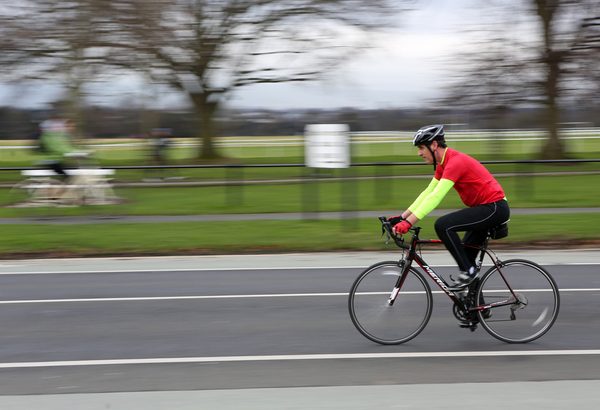I’m fascinated by the cycle of history and the way in which things discarded as outdated often come back into fashion again. The classic example is the tram: declared redundant in 1949, the city tram has returned as a wonderfully efficient and environmentally-friendly form of public transport.
And now the wretched coronavirus is producing a new revival – although it had been gathering pace over the past few years anyway: the bicycle. The bicycle is about to be hailed as the best form of public transport of all. In Britain, Boris Johnson has exalted the bicycle above and beyond any other transportation suited to our times: clean, cheap, healthy and perfectly accommodated to ‘social distancing’.
In buses, coaches and trains, you may have to sit near to other people which could cause contagion, were the virus to linger. But on a bicycle, you’re in splendid isolation.
All European cities are to be exhorted to emulate Amsterdam and Copenhagen – where the bike is the most ubiquitous form of transport.
The bicycle has played its part in the history of human movement, and advancement.
In the 1880s, young women who took to their bikes were making the first steps towards emancipation – regarded as very spirited young ladies indeed.
The bicycle is reckoned to have changed habits of courtship and marriage”
In the early 1900s, the bicycle was taken up by youth movements, including early Sinn Féin – Patrick Pearse was very fond of his bicycle.
Health movements, feminist movements and alcohol abstainers embraced the bicycle, but it wasn’t until after World War I that a bike became cheap enough for most working people.
My uncle remembered that by the 1920s, you could buy a bicycle for between £1 and 30 shillings, which was about the average weekly wage for many men.
The bicycle – niftily used by Michael Collins in his daring dashes around the country – is reckoned to have changed habits of courtship and marriage. Before the advent of the bicycle, young men and women tended to marry within their own communities and parishes. But the bicycle made it possible for young men to go a-courting many parishes away – a healthy chap could cycle 20 or 30 miles away to meet a sweetheart. And so the bicycle brought about more variety in spousal choice.
This was reckoned to be good for the gene pool, because of the dangers of kinship marriage within smaller communities. On the minus side, I suspect it may also have allowed more reckless lads to seduce and abandon girls further away; within their own communities they might be held to account.
Oh yes, the bike is indeed part of the cycle of history, and it’s on its way back to the hub!
Online prayer is great but a little music wouldn’t go amiss
These Sundays I ‘freelance’ across different churches, as I have mentioned, for morning Mass via the wonders of the webcam. Last Sunday I visited, virtually, St Theresa’s in Clarendon Street, Dublin, a church I’m very fond of. In normal times, it attracts people just popping in for a prayer, or catching a Mass during a lunch-break. I remember an Anglican visiting cleric who said that what he liked about Irish Catholic churches was that ‘the people treat the joint like their own’. Clarendon Street has always been like that.
It has also had lovely music, during normal times. So it was disappointing there was no cantor on the internet Mass last Sunday. It was a thoughtful, calming Mass, served by a Scottish priest and supported by priests from the Indian sub-continent and the Philippines. But a webcam Mass is by definition ‘distancing’, and consequently a little arid. Webcam Mass, more than any other, needs music, and other churches are managing to provide it.
All that’s required is one person singing, with one back-up violin to create an uplifting and spiritual accompaniment to an internet Mass.
No self-isolation for St Brendan
May 16 marks the feast-day of St Bréanainn of Clonfert, who we usually know as St Brendan the Navigator. The ‘Brendan Voyage’ is described by O’Riain’s Dictionary of Saints as the most influential of all medieval texts, attested by the 9th Century and translated into many languages from the Latin. Did Brendan get to America? He got to somewhere named the Land of Promise which is a fair description of territory across the Atlantic.


 Mary Kenny
Mary Kenny
